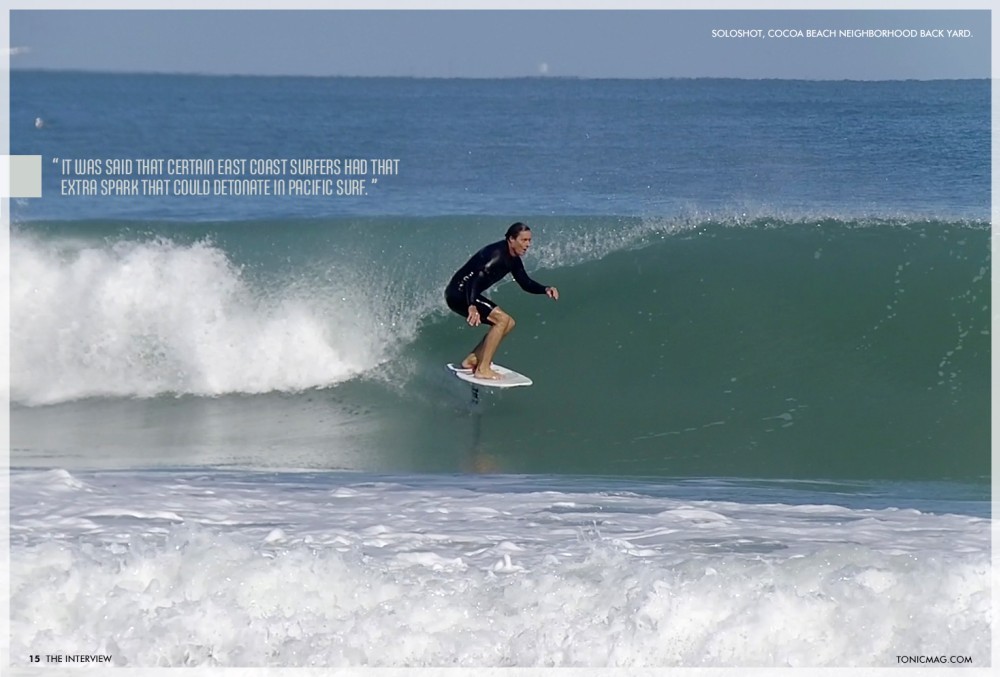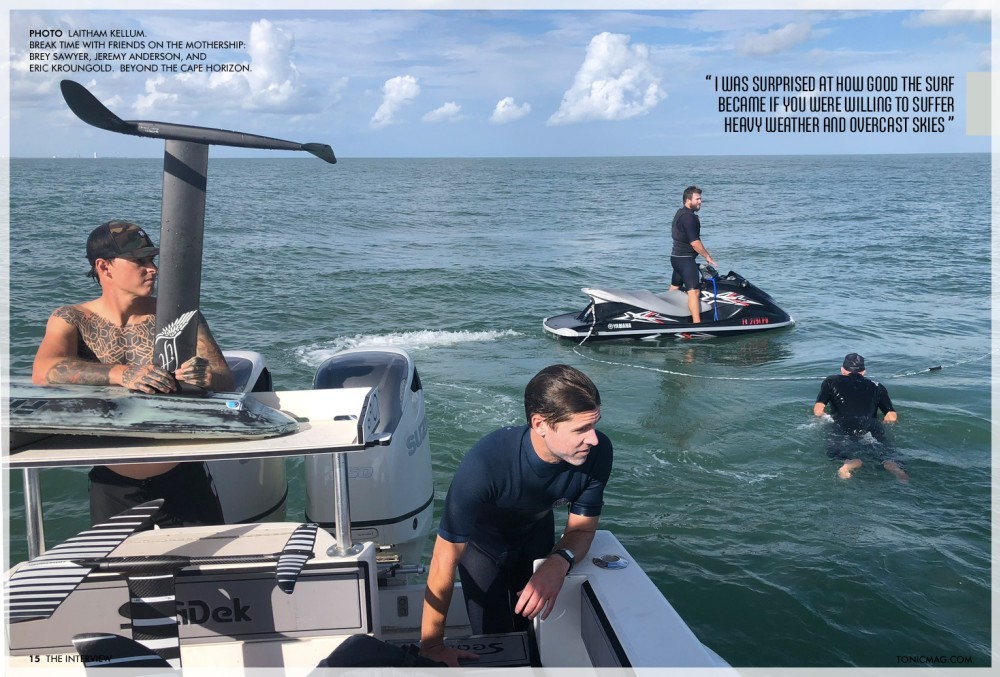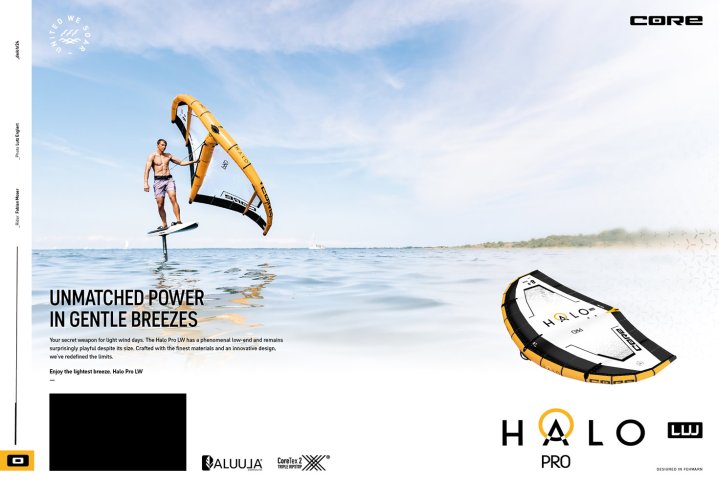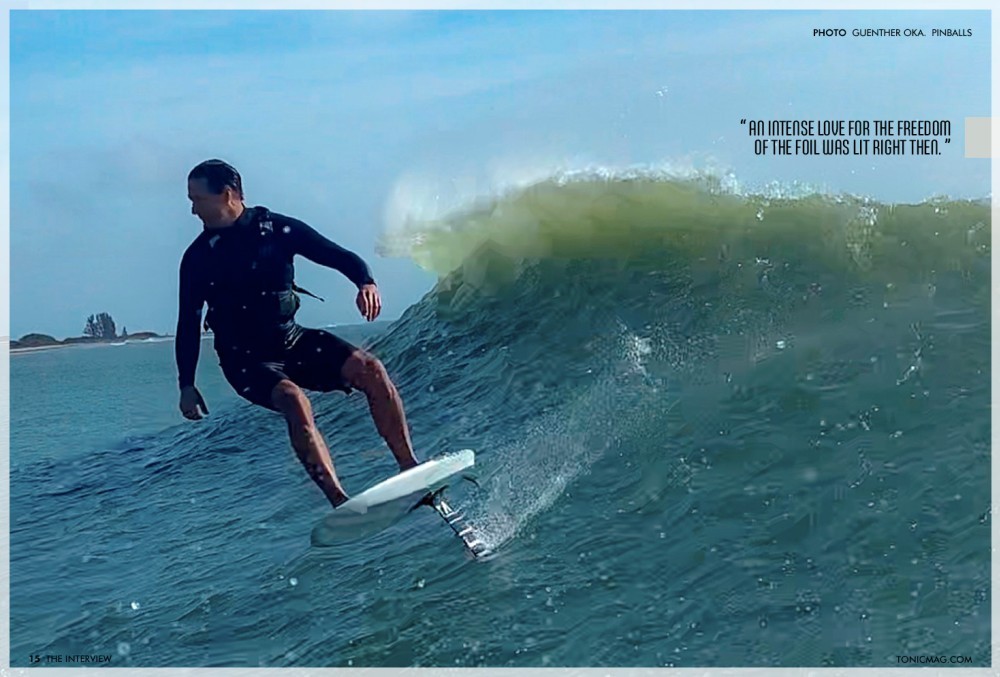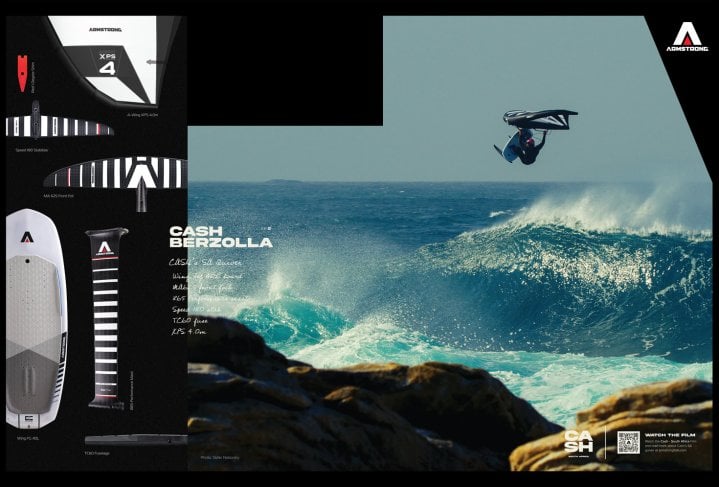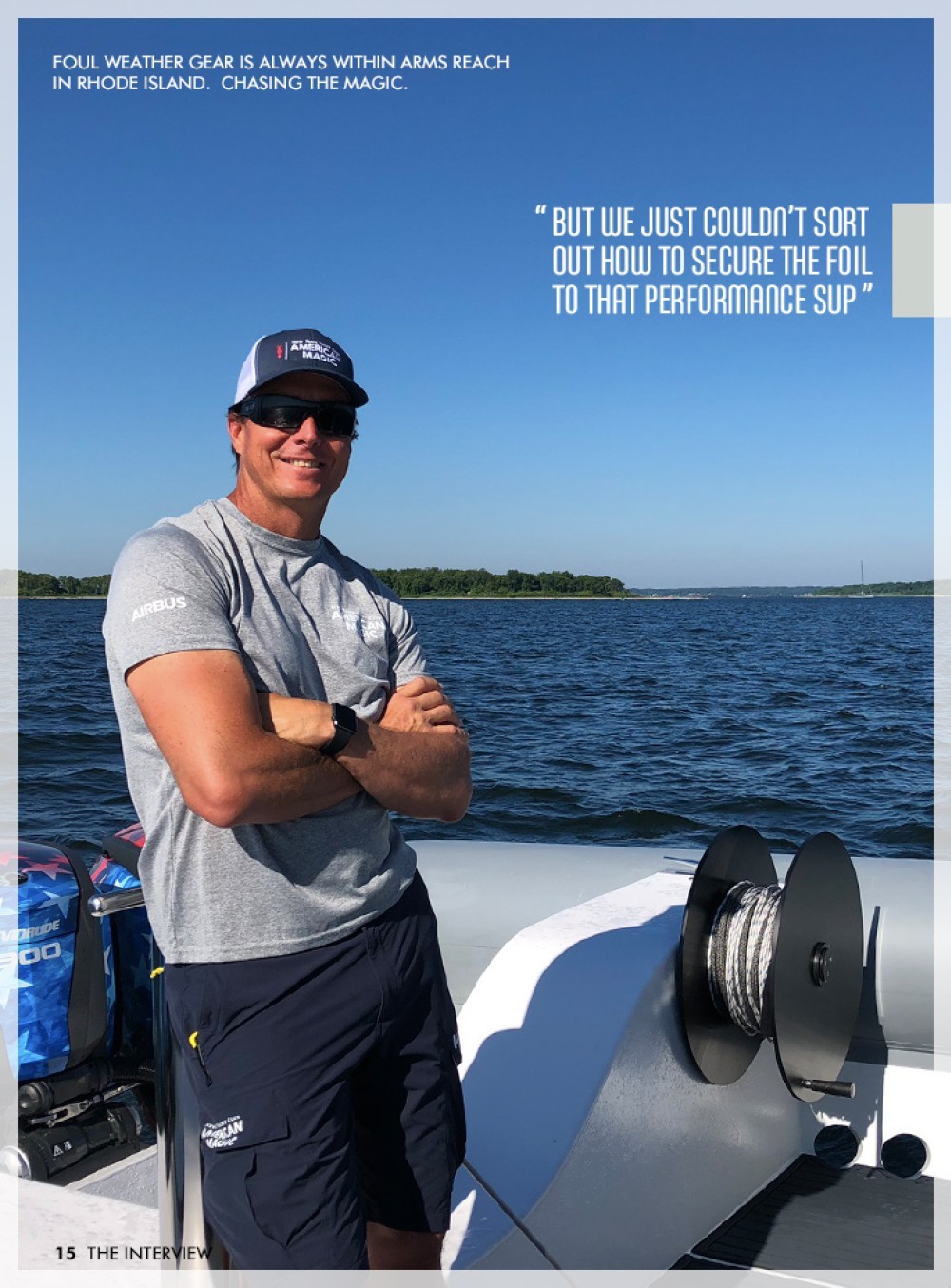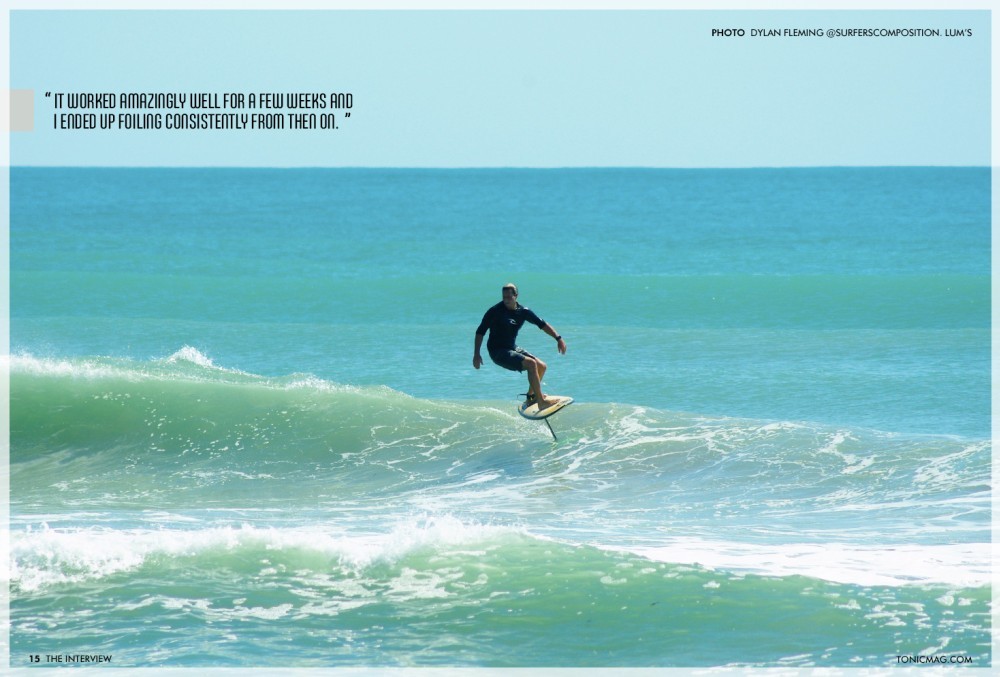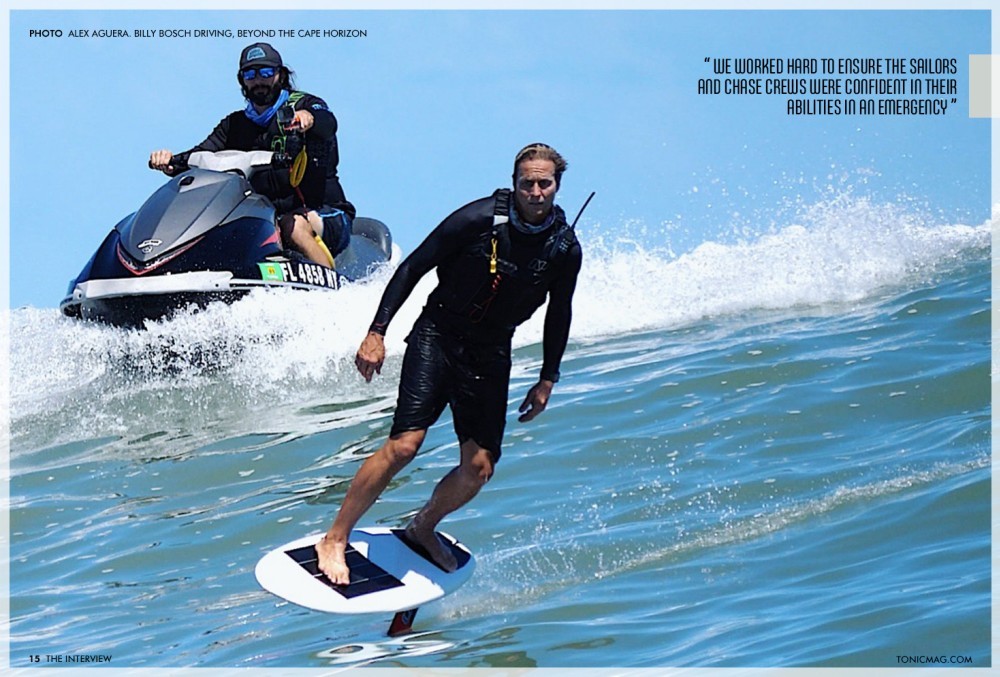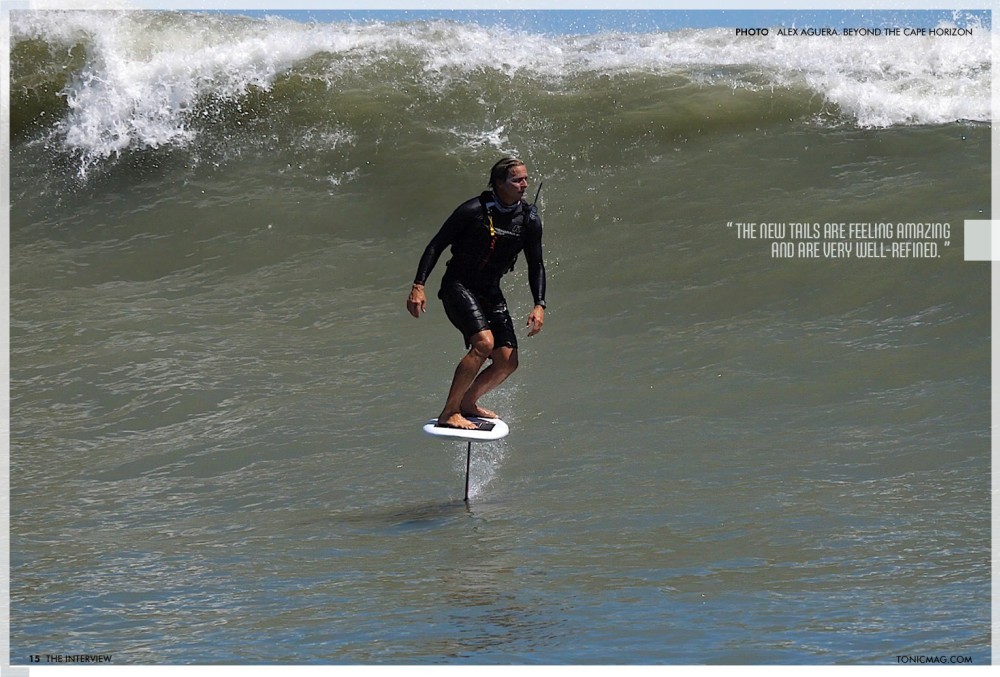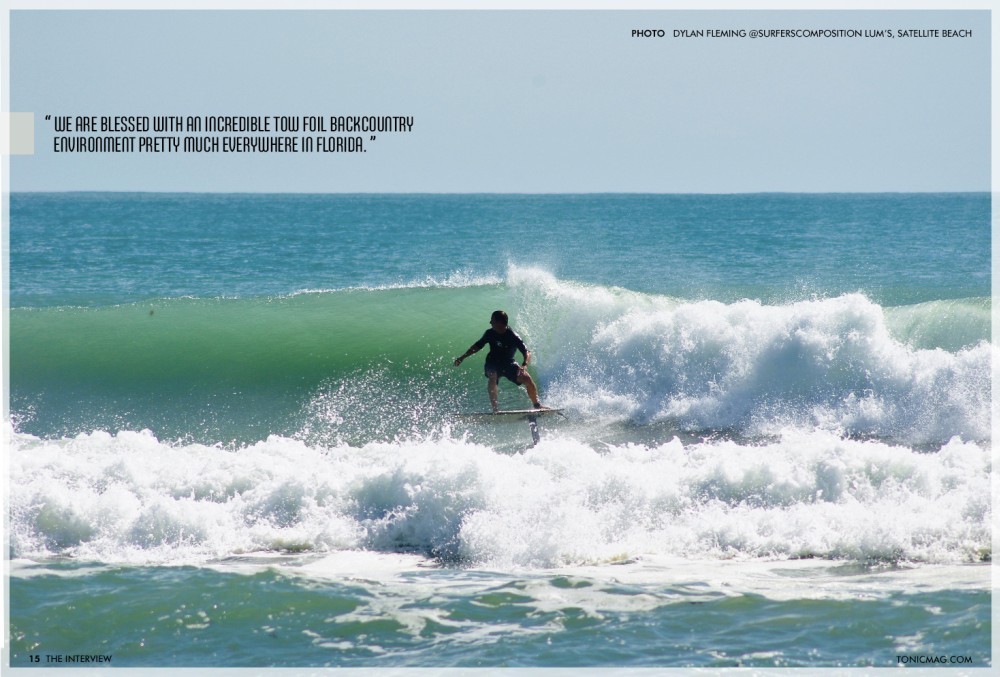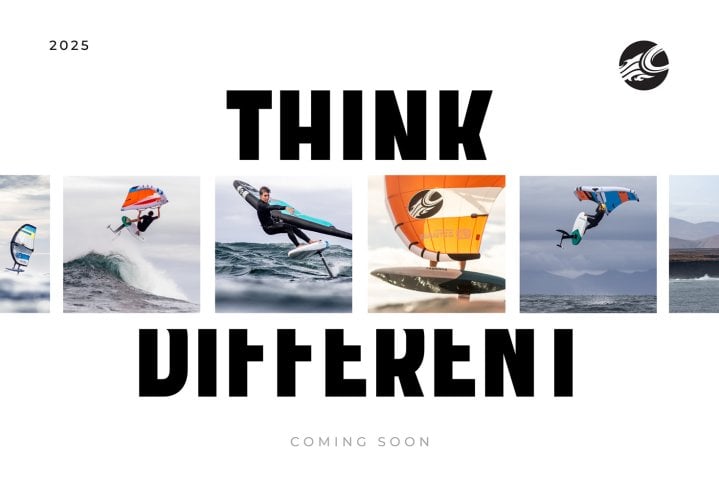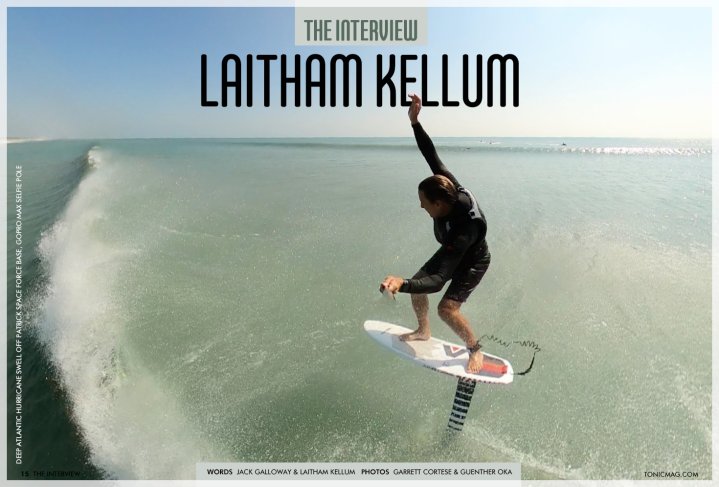
The Interview - Laitham Kellum
Issue 15 / Thu 23rd Feb, 2023
Jack Galloway sits down with waterman & foiling brother Laitham Kellum
Laitham Kellum is the definition of a waterman if I ever heard of one. He’s rumoured to have been prone foiling since before the original Kai Lenny videos went viral. Laitham’s unique in that he comes from both a surfing & kite surfing background, two skills which I think combine perfectly for surf foiling. Read on to get a small insight into his life & foiling journey so far.
Hey Laitham! Thanks so much for joining us. Could you start by introducing yourself a little? Where in the US are you based?
I was born in Miami, a multi-generation Florida native. My family were tug boat captains, from running barges in the Americas and Bahamas, dredging inlets, to transporting raw materials for the construction of the space centre at Cape Canaveral. I was then raised in Central Florida, Cocoa Beach.
I believe you started surfing in the 70s. Can you tell our readers a bit about those early days? Must’ve been really special to be a part of.
My father was a surf addict from the start. My earliest memories as a toddler are of him waking my sister and me for dawn patrol and heading straight to Sebastian Inlet where we were pretty much left to ourselves to surf, swim, fish, and crawl around the rocks around the jetty and tidal cove all day. I remember preferring to body surf for the longest time before giving in and finally paddling out on the regular like my dad and sister.
Although the wave quality of Sebastian Inlet in the 70s was world-class on semi-frequent occasions, the lineup there was world-class at all times. Every bit as intense and hierarchical as Pipeline or Malibu, if not more so due to the persistent wave hunger of a typical East Coast surfer. It was said that certain East Coast surfers had that extra spark that could detonate in Pacific surf. The 70s were a magic time with the shortboard revolution in full swing. Long hair, custom vans, and lightning bolt surfboards. Everyone seemed to love the colour red for some reason, lol. My whole world smelled of tangerine and coconut surf wax, it was full of surfers, fisherman, golden sand, and blue skies. I literally thought everyone in the world surfed as an intrinsic part of their existence.
As I grew, surviving in the central core of the pit at Sebastian tended to make one street-smart and savvy with both wave etiquette and crowd domination. Survival led to thriving in that environment over time. The ’70s turned into the ’80s with a vengeance. Having the main peak functionally dialled as a kid led to some hectic incidents once I grew into an adult-sized threat to the collective wave count. While most guys out at first peak on any given day were on the clock “professionals” I was more of a “grey man” so to speak, never a standout, blending in until I was in perfect position. It was a different era then for sure. Family struggles kept me away from the spot often through my early teens but that just made me more hungry for the peak once I started driving my own car. My perspective was a direct relationship with the ocean, the people in it were secondary at best, regardless of clout. I would never back down from a fight. You learn quite a lot about human nature and self-control in that environment. Put in the work, earn some scars. Lifelong skills for sure.
I find that fascinating, and intense! You were an avid kitesurfer for a long time, which says to me that you adapt well to change and are keen to learn new things. Do you think the kitesurfing skills helped when it came to foiling?
Absolutely. I was just looking for board speed in a surf-starved environment. I was surprised at how good the surf became if you were willing to suffer heavy weather and overcast skies, which is where kitesurfing was a perfect fit. What is considered garbage for most was actually full of frequently overhead magic days and exploration. I thank kitesurfing for getting me far out past the lineup and into the typically inaccessible wilderness breaks on the horizon that are in abundance here in Florida. This led me to realise the appeal of surfing alone, and the importance of self-reliance.
Did you first access foiling through kitesurfing? What year was it and how did it go?
Yes, when kite-foiling came along for its second surge (the first one being around 2001-2004 and the Strapped crew and the elite Maui kiters like Elliot Leboe and Rush Randle were ripping on future-primitive foil gear). The next evolution in the 2010s now seemed more practical. Trading heavy aluminium for carbon and form-follows-function prototyping made me an early adopter for this round. My first-week kite-foiling was in head-high ground swell and pretty light winds at the end of my street here in town. I could instantly feel the power of the swell through the foil and was consistently outrunning the kite, relying on pure foil power alone.. it was a eureka moment. Within weeks the board straps were gone and the kite sizes dropped in half, with the kite chord length doubled to allow them to drift and float down the wave with slack lines. An intense love for the freedom of the foil was lit right then.
Such a great way to start foiling. Rumour has it you were prone foiling before the famous Kai Lenny videos came out. What kit were you using back then?
We were on basic Slingshot and Lift kite foils then, as we did not have the convenience of a waterman legend like Alex Aguera developing proper carbon fibre surf foils in our own neighbourhood! My good local friends from surfing and kiting, Billy and Jeremy were also hooked on kite foiling and knew we needed to figure out how to mount a kite foil to a “big” board and just paddle in. Another good friend Glyn Ovens was into the performance SUP discipline at the time and was staying at my home for a couple of weeks. He definitely understood the assignment and had left a spare Fanatic board to try out as a foil test bed, but we just couldn’t sort out how to secure the foil to that performance SUP. Any local shapers and fibreglass pros that we asked for any help would let us down easily with a friendly “I don’t understand, please go away”...
The ultimate functional result was taking my old 5’10” Slingshot Dialer kite surfboard, with thin wedges from the hardware store placed “just so” to level out the tail rocker under the mast plate. It was both very successful and also very fragile. It worked amazingly well for a few weeks and I ended up foiling consistently from then on. Ultimately ending up prone foiling on a 25L Slingshot warfcraft kiteboard for several more months due to the push for a desiring a smaller board size. With all other factors covered at the time, I then endured an entirely new fitness/diet regimen to accommodate the low volume prone setup dropping from 225 pounds down to 205. The journey to foilsurfing crested the uphill leg when I finally got on the GoFoil kit, thanks to Alex Aguera, and had my first purpose-built carbon-innegra prone foil board local custom within the week.
I get the impression your motivation for foiling hasn’t faded one bit since then.
I am now a lifelong student of the craft for sure…
I can see you’ve worked with America’s Cup/Sail GP boats. What was your role there? Must’ve been inspiring to be a part of!
I was a medic/rescue technician for the American Magic team under the New York Yacht Club. I helped design the emergency response procedures for the team and developed response profiles for the surrounding emergency agencies in the local areas they operated. My job required me to be stationed on a chase boat following the yacht at close range while ready to respond in seconds. It is an incredible sight to see a full-size yacht standing tall on one foil arm and a rudder, devouring miles in mere minutes. The need for immediate quick reaction safety teams has been directly driven by the speed gains the new technology brings to the yachts. This push to improve the safety aspect was driven home by the loss of the AC sailor Andrew “Bart” Simpson in San Francisco in 2013 on Artemis. More speed means more energy transfer in a crash or capsize. This could translate to heavy trauma, ejection or entrapment for sailors, and even rapid sinking of the vessel. We worked hard to ensure the sailors and chase crews were confident in their abilities in an emergency, and the shore crew supported that safety mission. That confidence in safety can ultimately translate to even higher performance from a team at the Americas Cup and SailGP level.
Sounds like a seriously cool job. How are you finding the new Armstrong MA foils? What sizes do you prefer and how do you have them set up?
First, let me say that I am not officially sponsored by Armstrong Foils, I simply prefer the gear due to a wonderful blend of engineering, aesthetic, durability, and consistent build quality. I have never been easy on my foil gear and the Armstrong kit is definitely up to the task.
My favorite setups:
Prone surf: 72cm mast
CF1200, 50 fuse, 232v2 tail with 0.5 shim (performance surfing, not pump, and glide, still good for double dips when needed)
MA1000, 50 fuse, 235 flow tail no shim
(Performance surfing/pump and glide, decent)
Tow surf head high or less: 85cm mast
CF950, 60 fuse, 195 tail
Tow surf overhead: 85cm mast
HA725, 60 fuse, 195 tail (swoop
CF950 (pocket surfing near the peak)
MA800 (fun, playful, and large speed range)
Freshwater wake: 72cm mast
CF1600, 50 fuse, 232v2 tail
Wingfoil: 85cm mast
Variety of sizes-
Light wind vs heavy
Small surf vs big
I have just begun exploring the MA series. The biggest takeaway is that the low-end speed lift/stall point is significantly lower than the HA series. The tip ventilation recovery is profoundly better than the HS series. My weight at 6’3 and 205 pounds, and being mostly addicted to prone foiling in beach break sandbars, I need to find the proper lift and manoeuvrability while retaining glide speed (just like everyone else!)
I find the MA1000 is a great all-rounder for waist to overhead, but I am struggling out of the hole with its low lift in smaller surf as I really have to work hard to keep it going. I found the MA series should not shim the older tails as they tend to dive at higher speeds if shimmed. Furthermore, the new MA front wings really should be set-matched with the new tails that just came out. The new tails are feeling amazing and are very well-refined.
I also bounced back to my HS1550v2 for a weak high tide session and am still blown away at how well it lifts and stays up on prone takeoff- I just got the MA1225 and it is similar enough to the 1550 with adjustments to wingspan, tip angle, and chord in all the right places. The surf at home immediately went into a wave drought as soon as I mounted the 1225 to the board so we gotta wait for any feedback on that!
Have you also got the High-Performance mast? Is it as good as everyone says it is?
I have only towed with the 795 so far. The biggest observation is that it feels amazing in the foil-to-board relationship.. it is tight with no perceived wiggle or bend when riding and pumping. Efficiency improvement for sure!
During my last offshore tow session, (MA800/60/195) I was initially skeptical of the slight 1 degree nose-high mast plate angle. I immediately put it through several g-turn backside cutback swoops, flying up into the peak apex and down into the trough fully loaded at speed. The board angle of attack feels much more predictable should I tap down to the deck. This 1 degree improves the “send it and forget it” factor for me.
What's your favourite discipline at the moment? Do you still do any winging/kiting or is it all prone/tow these days?
Prone foil, simple and purest form of foilsurfing. Tow foil is right up there as well, and we are blessed with an incredible tow foil backcountry environment pretty much everywhere in Florida.
I still wing or kite if it is flat, or if we want to chase down yacht wakes in the inter-coastal waterway with friends. I’d rather paddle out on kite days and do surfing downwinders.
Do you have any foiling goals this year or are you just enjoying it as it comes?
Exploration and discovery of more new foil breaks. Traveling soon to the Mediterranean and European Atlantic to hang with family and friends, so hoping to get a few weeks in over there.
By Jack Galloway




